Thundering beats of the Dhak
And blowing of the conch shells
Ringing of the cymbals and bells
And the fragrance of Dhuno in the air
Kumari Puja and Sandhi Puja
Each has a story to tell
Aarti and Pushpanjali
And the Divine Bhog
As the frenetic celebration fades away
That mirth and spirit will always remain
MAA SHAKTI resides within us
Discover Her once again
Being away from Bengal since childhood and a Probashi Bengali (non-resident Bengali), I have never felt distanced from Durga Puja traditions.
My parents had inculcated the Worship of Shakti and the spirit of this festival right from the very beginning.
Every year, our mid-term school exams would coincide with this 5 day festivity. I still remember how we managed to visit different Puja Pandals in the evening and later at night, study hard for the next day’s exam paper.
Maa Durga’s homecoming has had a very special place in my life, and I had always desired to visit Kolkata – to see the craftsmanship, the gorgeous Pandals, learn more of this tradition and the rituals.
I feel blessed that Maa Durga gave me the opportunity to experience this outpouring of devotion and incessant love.
It is an incomparable experience of witnessing the glory and grandeur when Maa Durga and Her Children, Lord Ganesha, Maa Saraswati, Maa Lakshmi and Lord Kartikeya come home.
BIDDING FAREWELL TO MAA DURGA
After four days of celebrations, as Maha Navami draws to a close every year, there is a sense of finality that brings in sadness and an unexplained emptiness.
Maa Durga’s journey back to her home in Mount Kailash, the abode of Lord Shiva, is also celebrated as a big moment of the festivity.
Maa’s BIDAI (farewell) ceremony is marked with traditions which are centuries old, which have been followed by the womenfolk in Bengal, and anywhere in the world where Durga Puja is celebrated.
Maa Durga, adored as our own, is showered with eternal love and affection just like the Bidai ceremony of our daughter leaving home after marriage. The same unusual mix of emotions prevail – of joy and sorrow, and it remains undefined which is greater.
DASHAMI PUJA AND DARPAN BISARJAN
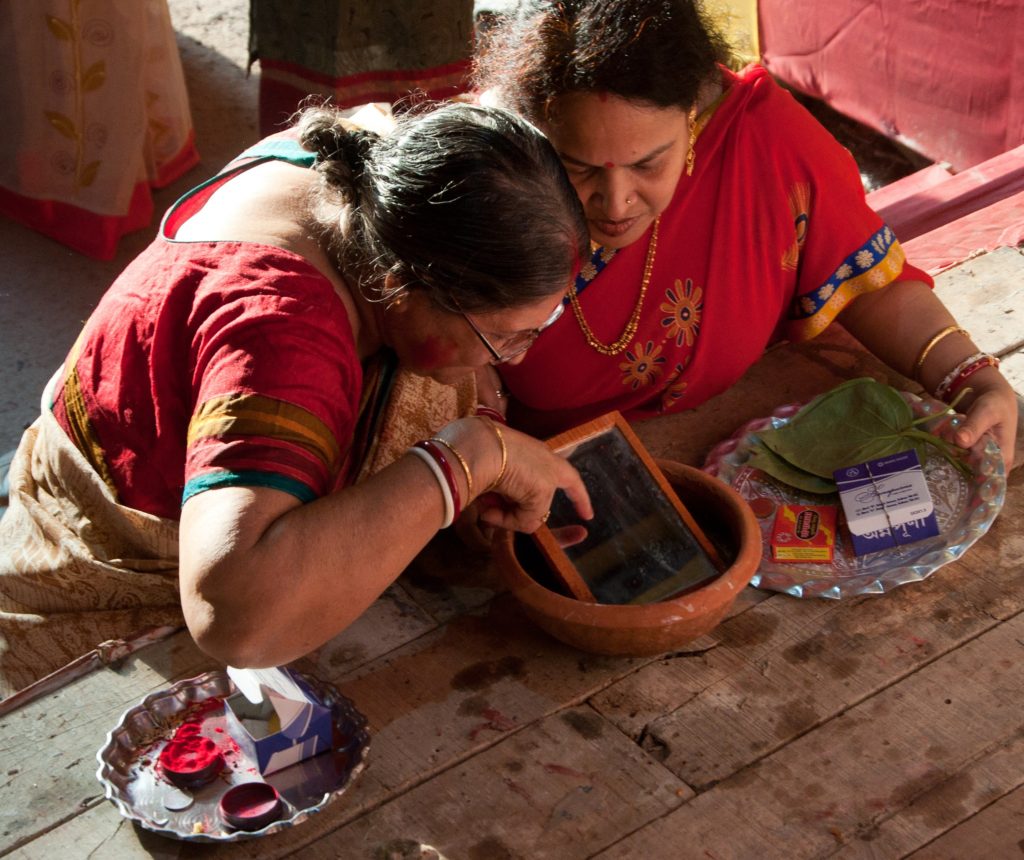
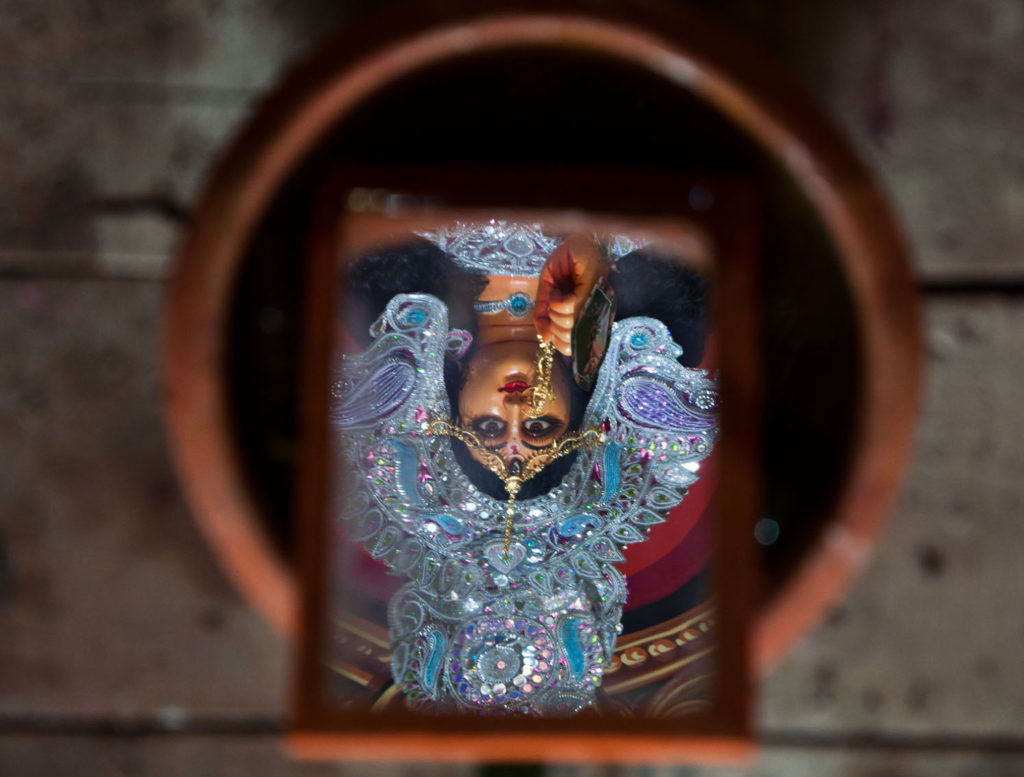
DARPAN BISARJAN
After Dashami morning Aarti and Pushpanjali, when the time arrives to bid adieu, it is difficult to hold back tears when Thakurmoshai’s chants (Head priest) of Dashami Puja fills the air.
Bisarjan Puja is performed by the priest in the Puja Kalash (Ghot in Bengali) where the reflection of Maa Durga in the water of Puja Kalash signifies that She is on her way home.
This is called DARPAN BISARJAN.
Thereafter, devotees seek a glimpse of Maa Durga’s reflection in a mirror immersed in an earthern pan filled with water, as part of the Darpan Bisarjan ritual.
DEBI BORON AND SINDOOR KHELA
DEBI BORON RITUAL
Dressed in the traditional saris (white with red border), married women offer their prayers and respect to Maa Durga with their Boron Dala.
Maa Durga’s Boron Dala comprises of Mishti (sweets), Sindoor (vermillion), Paan and supari (Betel leaves and nuts), Turmeric, Durva (special type of grass used in Puja) and Dhaan (rice grains).
Women offer Sindoor on the Forehead and Feet of Maa Durga and pray for the long life of their husband and happiness for all in the family.
SINDOOR KHELA
SINDOOR KHELA
After Debi Boron begins Sindoor Khela, where married women apply Sindoor on each other’s forehead followed by Sindoor on their three bangles shankha, pola and loha (three bangles, made of conch shell, coral and iron) as a symbol of good luck, prosperity and happiness in their married life.
Sindoor Khela is one of the most joyous and colourful moments towards the end of the festivity, when women playfully celebrate and smear Sindoor on each other’s faces and share the mishti prasad from their Boron dala.
NEELKANTH : MESSENGER TO KAILASH
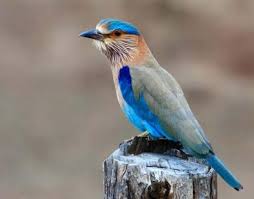
NEELKANTH BIRD
Sovabazar Rajbari followed a special tradition on Dashami with the Neelkanth bird (also named as the Indian Roller bird).
Ms. Ajanta De, daughter of Late Kali Prasad Deb, and from the 7th generation of Sovabazar Rajbari family, fondly recalls “ Two Neelkanth birds arrived every Dashami morning. These birds, fairly large in size, were brought from Sundarbans. We had to take special care of these birds as long as they were with us.
As soon as Maa Durga’s Pratima would leave Rajbari Thakur Dalan, one Neelkanth bird would be flown away from Rajbari. It was believed that the Neelkanth bird would carry the message to Lord Shiva in Kailash that Maa Durga has begun her journey and is on her way to Kailash.
After reaching the banks of holy Ganga river, another Neelkanth bird would be flown away, simultaneously alongwith the immersion of Maa Durga’s Pratima (idol).
This time, the bird would carry the message to Lord Shiva that Maa Durga has reached Kailash.”
This tradition was initiated by Raja Nabakrishna Deb of Sovabazar Rajbari in 1757 and was followed over many generations. This practise was however discontinued in 2010, after Neelkanth Bird was declared as one of the protected species of birds.
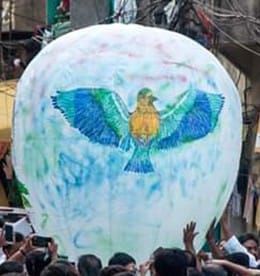
Neelkanth Fanush during immersion
Today, the Chhoto taraf bari (Rajbari of Raja Rajkrishna Deb, Sovabazar) follows this tradition by lighting the Fanush (Flying Sky Lantern) which has a picture of Neelkanth Bird drawn on it.
This Fanush is released when Maa Durga’s Pratima is immersed in the holy Ganga river.
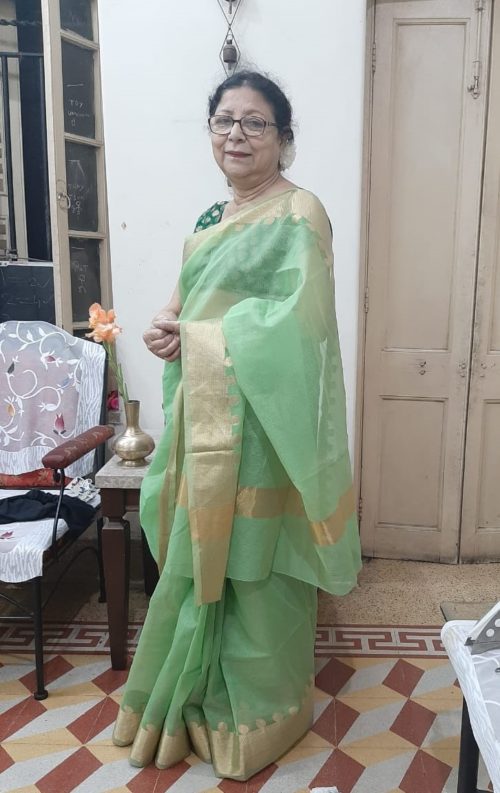
Prasad Deb, Sovabazar Rajbari
On Dashami, Ajanta Mashi (aunt), as we call her lovingly, shares a beautiful expression –
“Maa Durga arrives every year to Rani Rashmani’s home for being worshipped.
She visits Daan (दाँ)Bari (home) to adorn Her special jewellery and comes to Sovabazar Rajbari for joy and fun.”
This is perhaps why Sovabazar Rajbari Durga Puja is always full of divine happiness.
“মা দুর্গা আসেন রানী রাসমনির বাড়িতে পুজো নিতে।
দাঁ বাড়িতে আসেন গয়না পড়তে।
আর শোভাবাজার রাজবাড়িতে আসেন হুল্লোড় করতে।“
SHANTI JAL, SANDESH AND SHUBHO BIJOYA
BIJOYA SAMMELANI AT SOVABAZAR RAJBARI
Bijoya Dashami celebrations at Sovabazar Rajbari is perhaps the oldest and has remained unique. This tradition has been maintained by nearly 10 generations after Raja Nabakrishna Deb, who had started Durga Puja in 1757 in this Rajbari.
After the immersion of Maa Durga’s Pratima, sacred Ganga water from the same spot is taken in a Puja Kalash by Sovabazar Purohit moshai (priest) known as SHANTI JAL. This is placed in the Rajbari Thakur Dalan.
At 7 pm, unfailingly, all members of the Rajbari family assemble at the Thakur Dalan, men and women in their new attire will be seated opposite each other.
Soon, Purohit moshai joins and chants Peace invocation for three times and sprinkles Shanti Jal – sacred Ganga water from the Kalash on the family gathering. Durga Puja comes to an end with this ritual.
Thereafter, family members offer their prayers to their Family Deity, Shri Radha Gobinda which is on the second floor of the Rajbari .
This Family Deity is over 260 years old, established in 1757 by Raja Nabakrishna Deb.
A special ritual of tying cloth strands made out of Shri Govinda’s Angavastra is considered sacred, which also safeguards the family against any mishap.
Finally, the entire family get together in the central courtyard of the Rajbari, for the much awaited Sandesh and Siddhi.
Greetings of Shubho Bijoya amidst the young and old, with laughter and cheer is how the beautiful celebration of Durga Puja ends at Rajbari, Sovabazar.
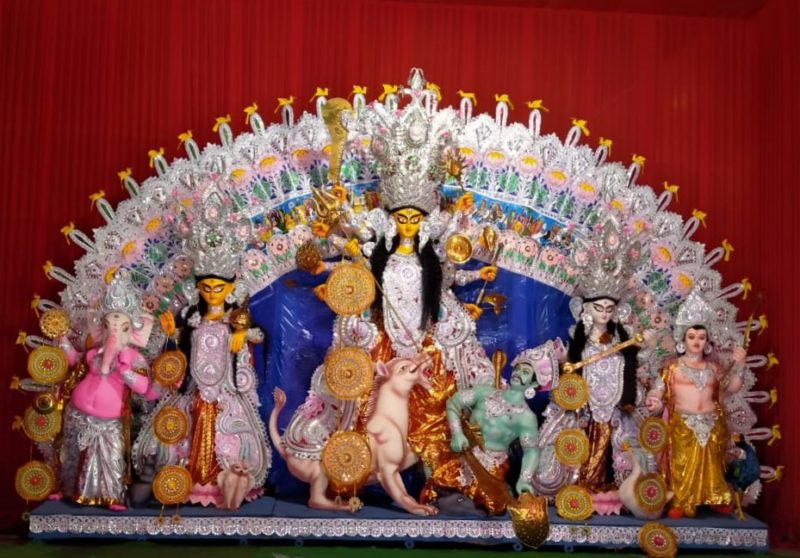
OLABIBITOLA SARBAJANIN DURGOTSAB, HOWRAH, WEST BENGAL
Started way back in 1948, OLABIBITOLA SARBAJANIN DURGOTSAB’s eldest member, Shri Sajol Kumar Banerjee, 96, still actively involved with the Puja, shares the humble beginnings of this Puja.
“With very little inhabitation around this place, few of us got together with our small savings to start this Puja. Post partition, our purpose was to build community feeling through this initiative.”
Shri Akhil Bondhu Bhattacharya adds “Some members of this group were part of our freedom struggle. This Puja started with Debi Mukh and Daker Shaaj Pratima. We have maintained this tradition for the last 72 years.”
This is just one of the many stories of unknown people who have selflessly strived in difficult times to imbibe the spirit of Durga Puja in Bengal and their immense contribution to this celebration will be always remembered.
JAI MAA DURGA
Behind the glory and grandeur of Durga Puja Celebrations, are the Kumbhakars.
Read about the World’s Largest Studio, KUMORTULI.
Photo credit : –
Atanu Pal, Third Eye, Email : atanuphoto7@gmail.com
Devi Prasad Sinha, Email : devipsin@gmail.com

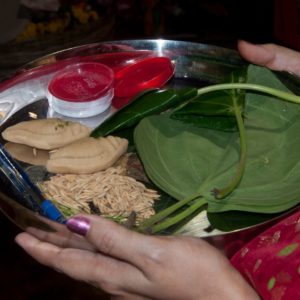
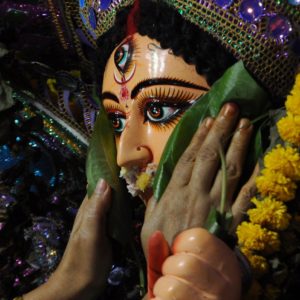
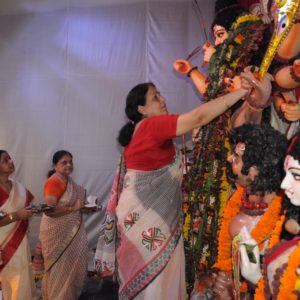
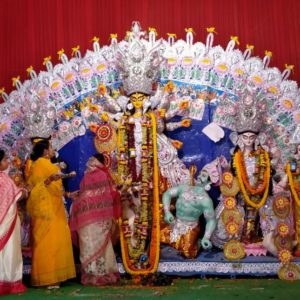
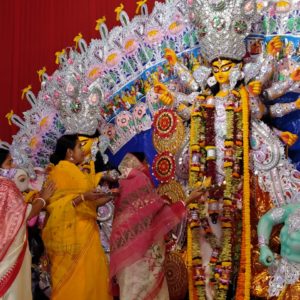
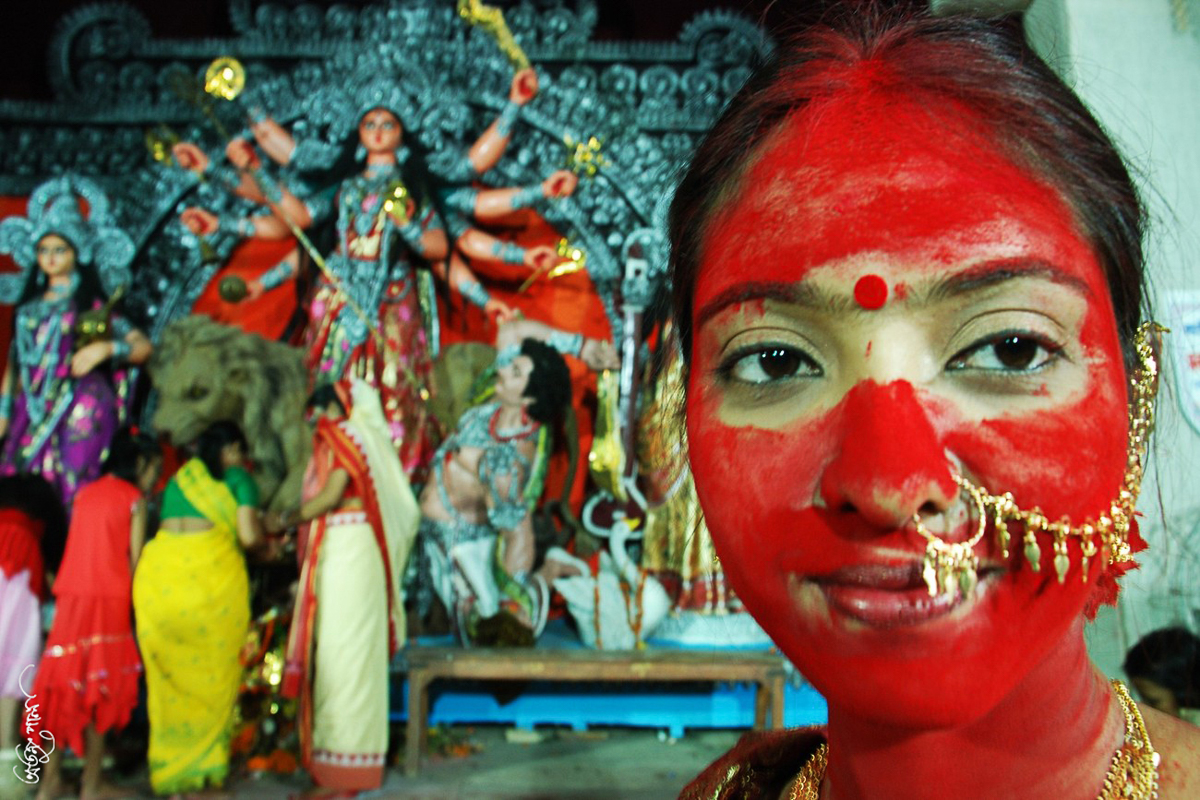
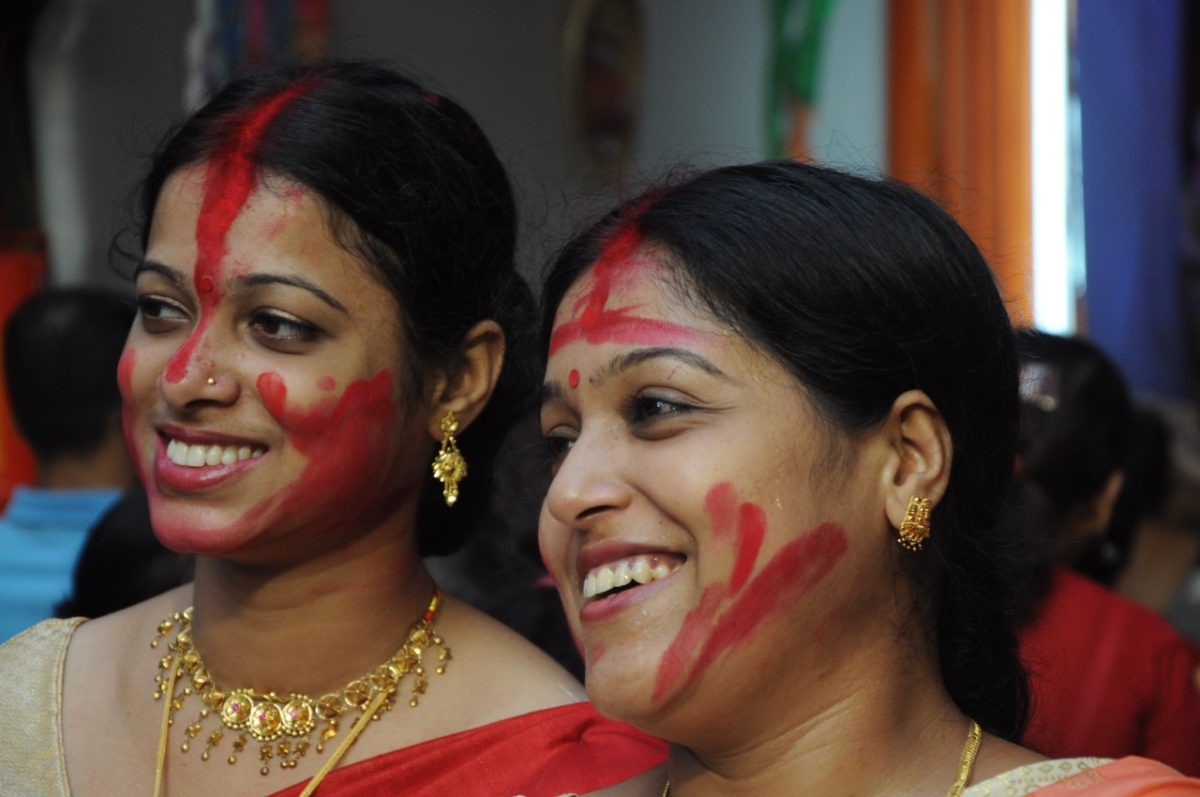
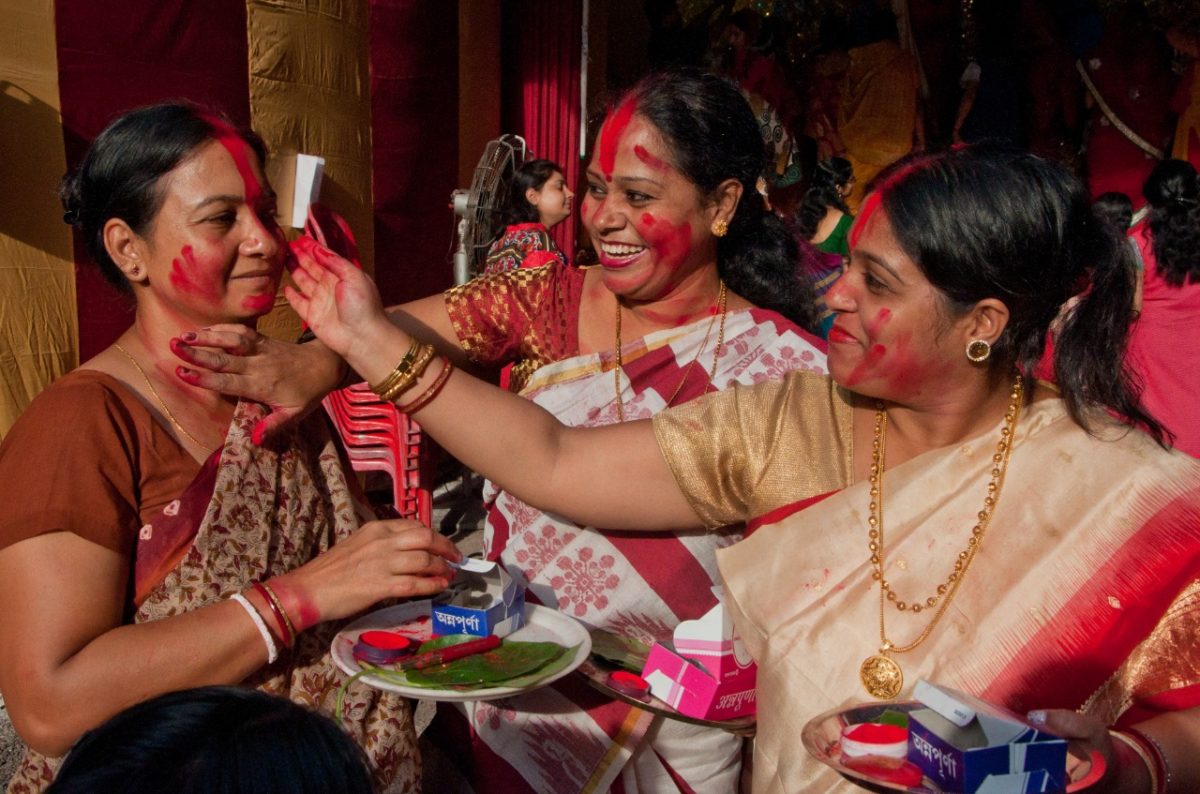
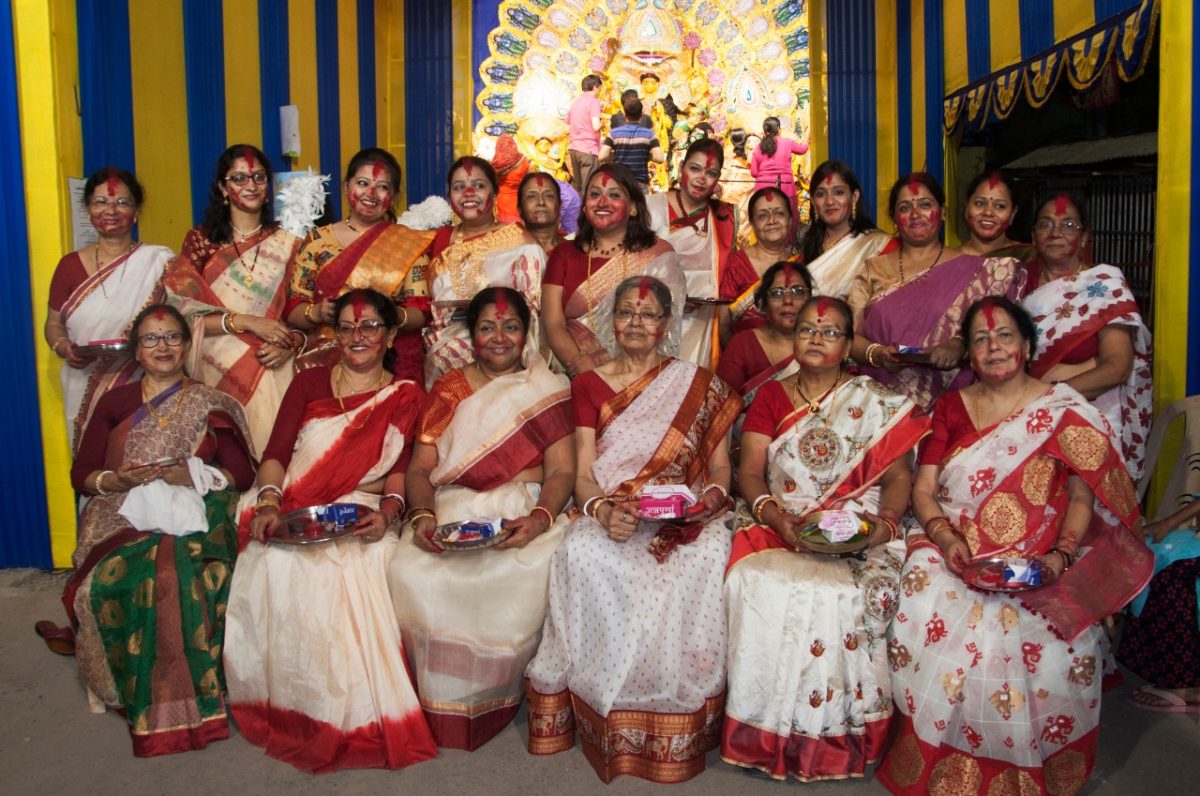
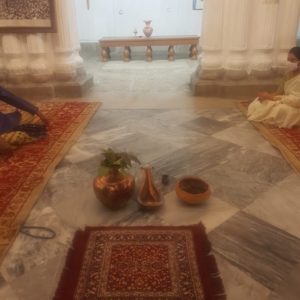
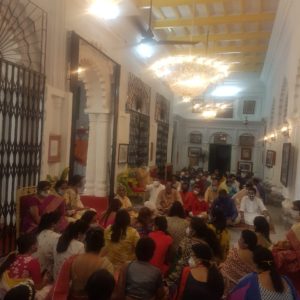
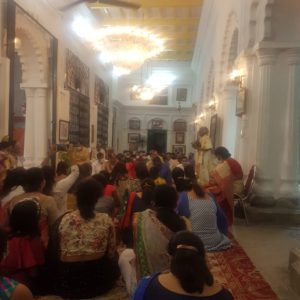
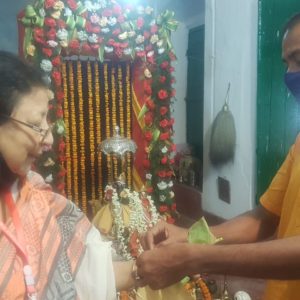
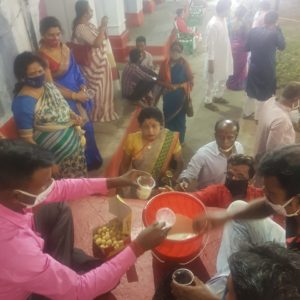
Interesting blog and so well researched. It was good to know about Sovabazar Rajbari Durga Puja traditionally done for more than 260 years. Dhashami tradition of Sindoor Khela, Shanti Jal are well written. Quite interesting to know about Neelkanth as messenger to Lord Shiva.
Congratulations